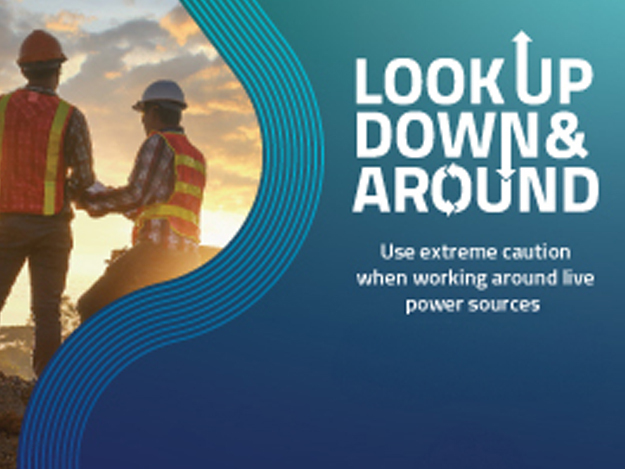During long-term power outages, many rely on portable generators for emergency power. The growing popularity of portable electric generators has resulted in millions being placed in homes and small businesses across the nation. But it’s estimated only a small percentage are hooked up correctly. Your local Touchstone Energy Cooperative urges consumers to understand the proper safety steps that must be taken.
If installed and operated correctly, use of standby or portable electric generators poses little danger. Improper installation or use could be dangerous to you and threaten the lives of your family, friends, neighbors and electric utility crews trying to restore service.
“Consult and discuss your purchase options with a reliable vendor, your electric supplier and contractors,” advises Jay Solomon, University of Illinois Extension Engineering Educator. “A qualified vendor or electric professional will know existing safety codes and the utility’s safety requirements, and can help you select the best equipment for your needs and situation.”
Properly connecting the generator into the system is a critical step for safe and effective use. A licensed professional should install a permanent, standby electric generator and can help with proper equipment for safely using a portable generator.
Have a qualified electrician install a transfer switch. The transfer switch breaks the path of electricity between the power lines and your main electrical panel. This is the best way to protect you, your neighbors and repair crews from ‘back feed.’ Back feed occurs when an improperly connected generator begins feeding electricity “back” through the power lines. This can seriously injure anyone near lines, especially crews working to restore power.
“Safety for the operators and users of a generating system in the home and utility crews cannot be over-emphasized,” says Solomon. “A qualified electrician should be consulted to ensure proper installation and electrical grounding requirements, circuit overload protections and local codes are met.”
Some homeowners choose smaller, portable generators to power essential electrical equipment during outages. Safe Electricity offers these tips for the safe operation and use of portable generators:
- Read and follow all manufacturer operating instructions to properly ground the generator. Be sure you understand them before hooking up the generator.
- Maintain adequate ventilation. Generators emit carbon monoxide. Never operate a generator in your home, garage, or other enclosed building. Place it in a dry, outside location.
- Never plug a portable electric generator into a wall outlet or connect directly to a home’s wiring. This can energize utility power lines and injure you or others working nearby. Electrical back feed also can damage the generator and home electrical equipment.
- Turn off generator and allow cooling before refueling. Gasoline and its vapors may ignite if they come in contact with hot components or an electrical spark. Store fuel in a properly designed container in a secure location.
- Protect your appliances. Turn off or disconnect all appliances and lights before you begin operating the portable generator. Once the generator is running, turn your appliances and lights on one at a time to avoid overloading the unit.
- Use proper extension cords. Use only safety-tested, shop-type electrical cords designed and rated for heavier, outdoor use to connect appliances. Many generators are equipped with twist-lock connects to reduce the chance of accidental disconnections due to vibrations.
- Shut down generator properly. Before shutting down a generator, turn off and unplug all appliances and equipment being powered by the generator.
- Remember maintenance between uses. It’s important to drain the gasoline from the generator while it is being stored. It’s also a good idea to inspect the fuel and oil filters, spark plug, oil level and fuel quality and start the generator on a regular basis before an emergency situation happens.
Your local Touchstone Energy Cooperative suggests that these safety guidelines and basic operating instructions be posted in the home and with the generator.


